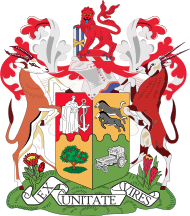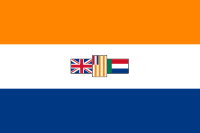Tales from Dystopia XVIII: Europeans are cordially invited
Fifty years ago in Pietermaritzburg there was an event to commemorate the third anniversary of the Republic of South Africa (and incidentally, but by then forgotten, the 54th anniversary of the founding of the Union of South Africa).
It was a public holiday, and the occasion was celebrated by military displays of marching soldiers, and a fly-past of Harvards of the South African Airforce (even back then they were obsolete). The posters advertising the event informed us that “All Europeans are cordially invited to attend”.
It reminded me of the title of a book by a now (thankfully) long-forgotten right-wing columnist, G.H. Calpin, There are no South Africans. The coming of “The Republic” in 1961, like the coming of “The Union” in 1910, was nothing for black people to celebrate. The invitation to the event spoke of the exclusion that the event was celebrating.
One of the biggest obstacles in the way of Union in 1910 was the non-racial franchise in the Cape Colony. That was quite unacceptable to the other colonies that were participating in the negotiations for union. The Transvaal and the Orange River Colony had an all-white, all-male franchise. So did Natal, for all practical purposes (I think about three Indians had the vote, but most of the white politicians were working hard to rectify that “anomaly”). But the Cape Colony had a non-racial franchise. It was sexist. It was elitist. But it was non-racial. Anyone who was male and owned or occupied property above a certain minimum value was allowed to vote. They could only vote for white members of the Cape parliament, but they could vote.
And just as the other three colonies found the Cape non-racial franchise unacceptable, so the Cape representatives to the national assembly found any suggestion that they should abandon it equally unacceptable. The negotiations had reached an impasse. It looked as though the grand project of union (which the British government had desired since the Confederation of Canada in 1867) was going to founder yet again.
Eventually a compromise was agreed. Union would go ahead. The Cape could keep its non-racial franchise. The other provinces could keep their all-white franchise, and this could not be altered except by a two-thirds majority of both houses of parliament (the Senate and the House of Assembly) sitting together.[1]
This continued for the next 20 years.
Except that, in the 1920s, white women were given the vote in all four provinces, with no property qualifications, but black woemn were not given the vote in the Cape Province, even if they had the property qualifications. But this was thought to be unfair to white males, so they too had the property qualification abolished.
Then came the great worldwide Depression, and this caused such a crisis that a National goverrnment was formed — all the main parties were represented in the government. This was thought to be such a good thing that the two main parties, the National Party and the South African Party (SAP) decided to unite to form a single party. The result was the United Party, and it was strong enough to command a two-thirds majority in both houses of parliament, and it took the opportunity to remove black voters in the Cape Province from the common electoral roll. Instead they were put in three separate constituencies, where they could elect three white “Natives Representatives”.
Perhaps one of the unforeseen consequences of this was that the South African parliament had its only Communist MP, Sam Kahn, who opposed the first reading of the Suppression of Communism Bill in 1949-50. It was unheard of for anyone to speak at the first reading of a bill, where all that was done was to decide when to have the second reading. The Communist representative ignored all attempts by the Speaker to shut him up, saying that he was speaking about the time for the second reading, and after a long speech outlining all the injustices of the South African political system, he ended with “I therefore propose that this bill be read a second time on the Greek Kalends, which would be the most suitable date for its introduction.”[2]
The United Party split again of the issue of participation in the Second World War, and the result was a “purified National Party” led by Dr Malan, which came to power in 1948, with the United Party in opposition. One of their first acts was to pass the Suppression of Communism Act, which, among other things, removed Sam Khan from parliament.
The NP then proceeded to remove coloured voters in the Cape Province from the common voters roll in the Cape Province. The coloured voters had stayed behind when the blacks were removed in 1936.
But this time the Nats did not have a two-thirds majority. They said they didn’t need one.
White ex-servicement friom the Second World War formed the Torch Commando and marched the streets of the cities in protest. White women wore black sashes to mourn the death of constitutional government. The Torch Commando, composed as it was of pusillanimous males, fizzled out, but women were made of sterner stuff and the Black Sash grew stronger and continued to protest against injustices perpetrated by the National Party government.
In 1960 the Native Representatives were removed from parliament altogether, and this symbolically opened the way for the first Republic of South Africa, to which all Europeans were cordially invited.
This post is one of a series of tales of memories of the bad old days of the apartheid era in South Africa. You may find the full series here: Tales from Dystopia | Khanya
Notes
[1] For a more detailed history of the Union and the negotiations that led up to it, see The myth of the “white man’s country” – the unification of South Africa, 31 May 1910.
[2] for those who may be puzzled by Mr Khan’s reference to the Greek Kalends, the Roman calendar had “calends”, but the Greek calendar did not, so the Greek Kalends is a lawyer’s way of saying “never”.




